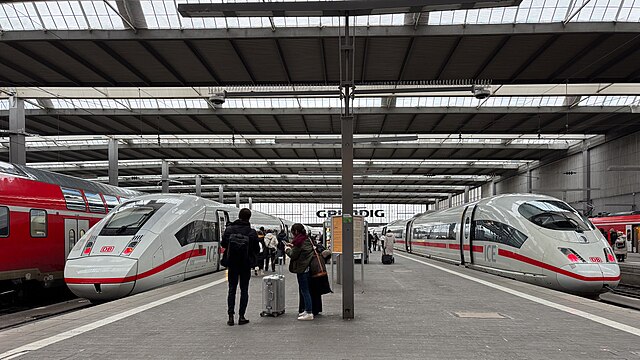The ICE 2 is the second series of German high-speed trains and one of six in the Intercity-Express family since 1995. The ICE 2 (half-) trains are even closer to a conventional push–pull train than the ICE 1, because each train consists of only one locomotive, six passenger cars and a cab car. The maximum speed is 280 km/h (175 mph), but this is limited to 250 km/h (155 mph) when the cab car is leading the train and even further down to 160 km/h (100 mph) when two units are coupled at the powerheads due to the forces on the overhead line by their respective pantographs.
ICE 2 on the Nuremberg-Ingolstadt high-speed railway line
ICE 2 powerhead with opened coupling cover
ICE 2 cab car
Control Panel in the driver's cab
Intercity Express is a high-speed rail system in Germany. It also serves destinations in Austria, France, Belgium, Switzerland and the Netherlands as part of cross-border services. It is the flagship of the German state railway, Deutsche Bahn. ICE fares are fixed for station-to-station connections, on the grounds that the trains have a higher level of comfort. Travelling at speeds up to 320 km/h (200 mph), they are aimed at business travellers and long-distance commuters and marketed by Deutsche Bahn as an alternative to flights.
A German ICE 3 trainset exiting a tunnel
First InterCityExperimental (ICE V) run as a full train, near Munich (September 1985)
ICE 3 and ICE 4 trains at Munich Main Station
ICE 1 on the Nuremberg–Ingolstadt line (December 2006)








